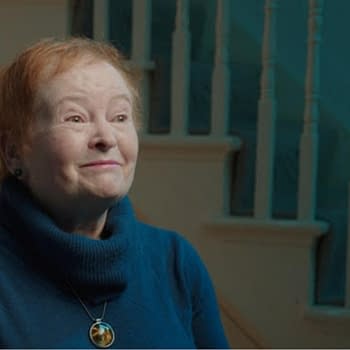Posted in: streaming, TV | Tagged: Tubi, Zatoichi
Zatoichi: The Blind Swordsman TV Series Available to Stream on Tubi
Zatoichi: The Blind Swordsman was a major film series and a TV series, with 100 episodes also starring Shintaro Katsu now streaming on Tubi.
Zatoichi has been a major pop culture figure in Japan since the 1960s but a cult figure in the West since the twenty-five movies that were released in Asia between 1962 and 1973 were less well-known in the West. The quintessential blind swordsman has been an influence on various creations like Marvel's Daredevil and many other TV and movie projects. It was only in the 2003 movie starring and directed by "Beat" Takeshi Kitano that the character became better known in the US. What even fewer people knew – and only the most hardcore Samurai movie fans did – was that Zatoichi also had a TV series. And now all four seasons – 100 hour-long episodes in all – are available for streaming free on Tubi.

The Origin of Zatoichi: From Minor Figure to Major Movie Franchise
If you're new to the character, Zatoichi (direct translation: "the blind one") was a blind wanderer in Edo period Japan who made a living as a masseur and gambler (which made him a Yakuza in the original definition of the word) who turns out to be a deft swordsman when anyone attacks him. He's not a samurai or ronin as some Western viewers think he is since his blindness places him at the lowest end of medieval Japanese society. He was originally a minor character in novelist Kan Shimozawa's stories before Daiei Studios and actor Shintaro Katsu turned him into the lead of a new movie. The Tale of Zatoichi, released in 1962, became a hit and spawned a whole series of extremely popular movies, turning the character into a pop culture icon, and made Katsu a star. There was an average of nearly two Zatoichi movies released every year up to 1973. By then, Katsu had formed his own production company, Katsu Productions, and gained ownership of the character. His company also produced the six famous feature film adaptations of Lone Wolf and Cub (the first two of which were bought by Roger Corman's New World Pictures and recut into the single-movie cult hit Samurai Assassin), which starred his brother Tomisoburo Wakayama (as samurai-turned-assassin Itto Ogamo, not the kid).
From Film Franchise to TV Series
The original film series ended in 1973 when the economic shifts shifted to a greater emphasis on the television industry. Katsu Productions decided to make turn Zatoichi into a television series with Katsu still playing the wandering blind swordsman. The series kept the same crew and fight choreographers and a rotating roster of directors who worked on the original films, including Kenji Misumi, who also directed the most popular of the Lone Wolf and Cub films, Katsu himself, and even Hiroshi Teshigahara, who is best known for director Woman in the Dunes. The TV series kept the same look and feel of the movies, using the same standing sets and locations, though with a lower budget and shot on 16mm and thus had a more grainy look with a 4:3 aspect ratio for television screens at the time.
Zatoichi: The Tropes
The hundred episodes of the TV series followed 1970s TV dynamics: Zatoichi was (mostly) unchanging from one episode to the next, and the 45-minute episodes (allowing for 15 minutes of advertisement breaks) followed a procedural "plot of the week" format. The stories were variations of familiar tropes established in the 25 movies that preceded it: Zatoichi wanders into a town and has to deal with bad guys, either Yakuza or corrupt officials. He might have to tangle with a ronin or rogue samurai working for the bad guys. He might help a damsel-in-distress. He goes to a gambling den where they try to cheat, but he always wins. He always ends up in a climactic and spectacular swordfight at the climax of the episode, where he never loses. Some of the episodes were condensed remakes of one of the movies' plots.
Some of the episodes found new and unexpected directions to take the story. Some episodes got odd and experimental, almost avant-garde, even really trippy. The final, 100th episode got very weird before putting all the toys back in the box by the end. Katsu produced, directed, and starred in another Zatoichi movie in 1989 in an attempt to revive the film series, but it didn't succeed, and that was the last time he played the character, who remained dormant until Takeshi Kitano was hired to play and direct the 2003 reboot. The character only appeared again twice, in 2007 in a 3-hour stage play co-written and directed by Takeshi Miike, and a 2010 movie Zatoichi the Last, which didn't have Kitano's involvement and appeared to kill off the character at the end, but that film wasn't very good and nobody liked it. Even if Zatoichi were to be revived again, Shintaro Katsu will always be the definitive version, though Kitano comes a close second.
Zatoichi: The Blind Swordsman – The TV Series is streaming on Tubi for free.














